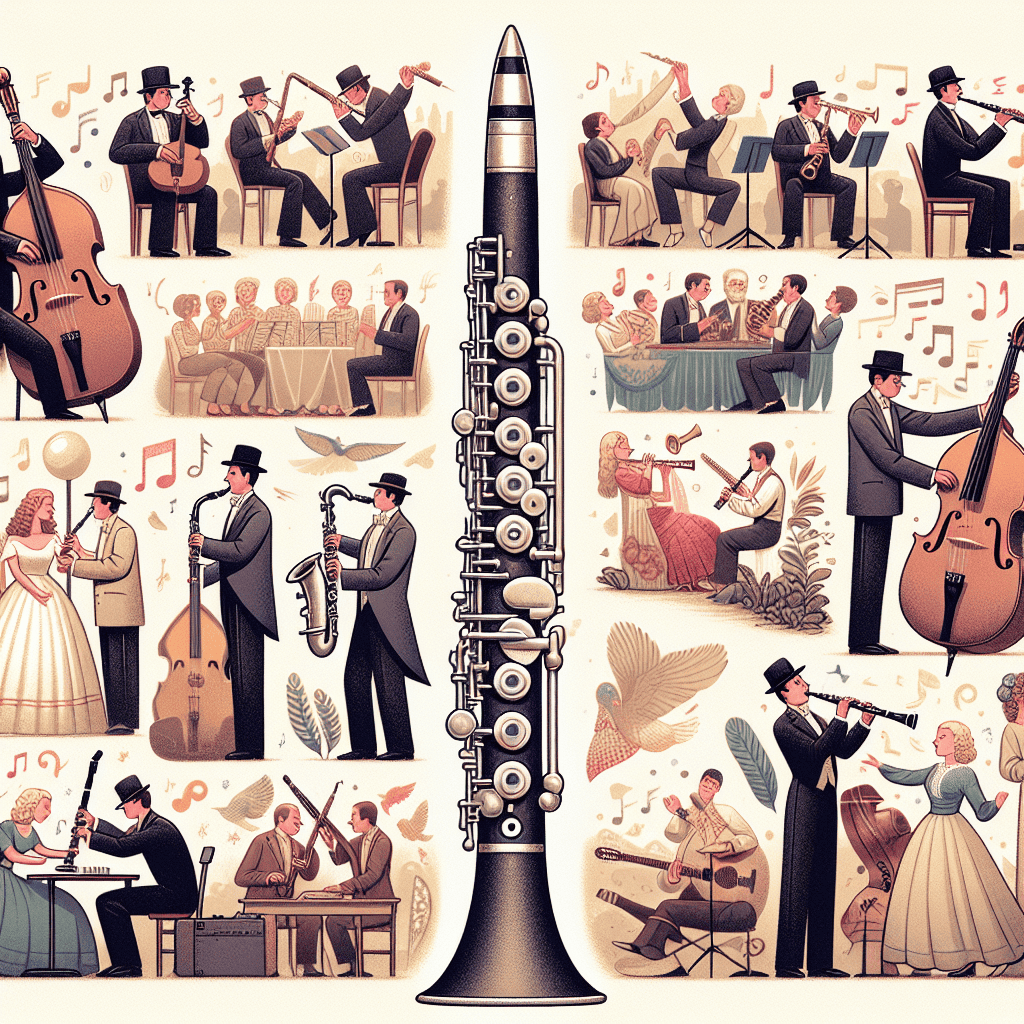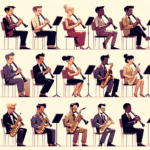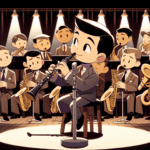The clarinet has been a key part of jazz since the genre's early days, appearing in various styles and settings from New Orleans to big bands. While instruments like the saxophone often steal the spotlight on today's jazz stage, the clarinet has carved out a special place thanks to its expressive range and versatility. Let's explore the fascinating world of clarinets in jazz, uncovering interesting facts and legendary players.
1. Historical Background
The clarinet's journey into jazz kicked off in the 1910s in the vibrant cultural mix of New Orleans, often called the birthplace of jazz music. In this city, clarinetists embraced the improvisational styles that would come to define jazz. The clarinet's initial popularity grew through the blend of African rhythms with European music traditions, resulting in a sound that was both fresh and uniquely American.
1910s
Clarinet enters the jazz scene in New Orleans
1920s-1930s
Rise of swing era, clarinet gains popularity
1940s-1950s
Bebop emerges, saxophone starts to overshadow clarinet
1960s-Present
Clarinet finds new roles in modern jazz and world music fusion
2. Iconic Clarinet Players in Jazz History
Many famous clarinetists have left their mark on jazz music. Their unique styles and innovations pushed the boundaries and showed off the clarinet's potential:
- Sidney Bechet: One of the first important soloists in jazz, Bechet was known for his powerful playing and ability to stir deep emotions. His work on classics like “Petite Fleur” left a lasting impression on the jazz genre.
- Benny Goodman: Dubbed the “King of Swing,” Goodman made the clarinet a star in big bands. His performance of “Sing, Sing, Sing” remains an iconic piece with thrilling clarinet solos, highlighting the instrument's importance in the swing era.
- Artie Shaw: Skilled in both classical and jazz clarinet, Shaw mixed complex melodies with daring improvisations. His famous recording of “Begin the Beguine” showed off the clarinet's expressive range in jazz.
- Johnny Dodds: A key figure in early New Orleans jazz, Dodds's clarinet style was deeply rooted in blues, characterized by soulful, expressive playing that fit perfectly with the genre's emotional range.
3. Distinctive Characteristics of the Jazz Clarinet
The clarinet's unique sound makes it stand out in jazz ensembles, allowing players to express themselves in special ways:
- Improvisation: At the heart of jazz, improvisation lets clarinetists create melodies, harmonies, and rhythms on the spot. Understanding scales and chord progressions is key for good improvisation.
- Vibrato: Players use vibrato to add warmth and depth to their sound. This technique involves small pitch changes that can make a performance more expressive.
- Flutter Tonguing: By rolling their ‘R's while playing, clarinetists create a unique sound that adds flair and excitement to jazz solos.
- Extended Techniques: Modern jazz clarinetists often try out new techniques, like multiphonics (playing multiple notes at once) or slap tonguing (a percussive sound made by quickly removing the tongue from the reed), expanding the range of sounds the instrument can make.
4. Noteworthy Jazz Standards Featuring the Clarinet
Over the years, many compositions have put the clarinet in the spotlight:
- “Ain't Misbehavin'” – A favorite among jazz musicians, this classic lets the clarinet show off with soulful riffs and thoughtful melodies.
- “When the Saints Go Marching In” – This traditional jazz standard features the clarinet in lively group performances, often with standout improvised solos.
- “Clarinet Marmalade” – A well-known tune by the Original Dixieland Jazz Band that shows off how fast and nimble clarinetists can play.
- “My Favorite Things” – This classic, famously performed by John Coltrane, sometimes includes clarinets, showing how versatile they are in conveying different moods.
5. The Current State of the Clarinet in Modern Jazz
Today, the clarinet continues to thrive in various jazz settings, growing its role in both traditional and modern styles. Contemporary clarinetists mix genres, bringing in elements from world music, funk, and even experimental music. Players like Don Byron and Anat Cohen show how the clarinet can be used in new ways, creating fresh sounds and taking the instrument in new directions.
As the clarinet adapts to changing musical trends, it remains a lively part of jazz. For those looking to play jazz clarinet, learning about the instrument's rich history and studying the techniques of famous players is key to developing your own unique style in this expressive art form.







